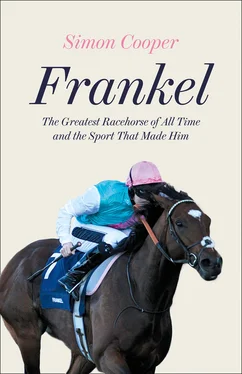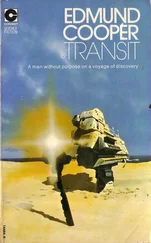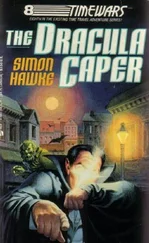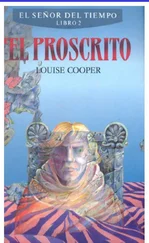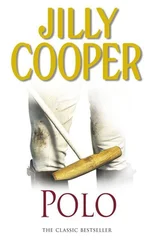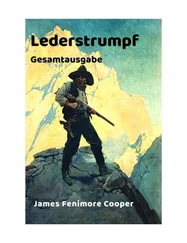If you are thinking, well, I don’t give a damn about tradition, I’m going to be progressive about all this in embracing modern science, then you will find your foal forever excluded from thoroughbred horse racing around the globe which requires all horses to be registered in the General Stud Book . The wording is definitive: ‘Any foal resulting from or produced by the processes of Artificial Insemination, Embryo Transfer or Transplant, Cloning or any other form of genetic manipulation not herein specified, shall not be eligible for registration in The General Stud Book.’ That closes the door on anything produced other than by what the rules call ‘natural service’, as we just witnessed between Galileo and Kind.
Then, of course, there is the money thing. The most productive bulls are inseminating over fifty thousand cows a year each. It doesn’t take a Nobel prize-winning economist to work out the supply and demand implications. Not only would there be a flight to a very few top stallions (only 95,000 thoroughbreds are registered worldwide each year) but the market would entirely collapse for everyone else. It is no exaggeration in saying that thousands of stallions would cease to be. Nobody would want them in physical or test-tube form.
But aside from the money, the flight to a very few stallions would be a slow-burning disaster for the thoroughbred breed. Interbreeding, in horses and animals or even people for that matter (think The Madness of King George ), eventually causes the bad, or more correctly recessive, genes to crowd out the good. Within a matter of generations, fewer and fewer foals would reach the racecourse as birth abnormalities became more commonplace. The racehorse as we know it – lithe, fit and fast – that began with those Arabian stallions all those centuries ago, would soon cease to be.
On something of a tangent you might be wondering, as I did, why those recessive genes haven’t taken hold in cattle. Fifty thousand sounds like an awful lot of offspring. Well, it is and it isn’t. There are currently 1.5 billion head of cattle on the planet (the most are in Brazil at 210 million, in case you ask). So, Galileo is fathering about one in 325 of the worldwide crop of foals each year, whereas Toystory, the most productive bull in history with roughly 500,000 calves to his name in nine years (he died in 2014), was producing a ‘mere’ one in 6,000 annually.
An in-foal Kind returned to a different Banstead Manor Stud than the one she had left. Two months on from the bleak of February, spring had come to the Suffolk countryside. The beech trees were in vivid green leaf. Birds were nesting among the hedges that separate the paddocks. The farm tractor was rolling the fields, the broad striped grass adding a certain gaiety to the morning turn out. Kind was paired with Prove in the Blackthorn paddock, a more experienced mare who had raced in France, the two mothers-in-arms with foals to care for inside and out.
Kind had stayed at Coolmore for a while subsequent to her time with Galileo. Two weeks after her covering she was confirmed as pregnant by a scan, an ultrasound that creates that same fuzzy black-and-white photo expectant parents hang on the fridge door. The egg, a single cell about the size of a grain of sand when fertilised by that one spermatozoon, was already multiplying rapidly by division, having spent a restless two weeks in the womb, moving around, until finally fixing itself in one of the horns of the uterus at the end of that first fortnight. A week later, the first heartbeat was detectable.
By the time she had her third scan two further weeks later the miniature foal was visible in outline. Seven weeks after covering, a manual inspection by the vet confirmed all was well. The yolk sac that had sustained the embryo had shrivelled away, the umbilical cord formed, tethering foal to mother. Now was time for Kind, Bullet Train and an embryonic nine-gram Frankel to head for home.
The Victorians liked to term pregnancy as a period of ‘confinement’, as if all activity was to be kept to a bare minimum – if that was the case it certainly didn’t apply to Kind. Or even her kind. Not all broodmares are retired racers – some are still in training, racing for the first third of their gestation. That will be for potentially as long as 100 days, as full term for a horse is generally regarded to be around 340 days or 11 months. And that time was to be spent largely unconfined.
I imagined that the Juddmonte mares, with their valuable cargoes, would be kept in light, airy boxes monitored 24–7 by both people and science. After all, one in five pregnancies don’t end with a live foal. Should there be twins (a rarity in itself at 2.5 per cent of all pregnancies) the chances are grim, with only one in six resulting in the live birth of both foals. But for all the attendant risks, my imagination is way off-beam; Kind and Bullet Train live the life outdoors, in the quiet paddocks that stretch away and out into the far corners of the stud. They are not alone. The Banstead Manor team group-up mares and foals at similar points in their respective lives. It is part social – horses like it that way. If you ever catch a glimpse of the wild ponies on the heather heaths of the New Forest, you will see a similar thing as the herd divides into groups, grazing together with the immediate companions defined by age and disposition. It is also practical; pregnant mares are the adult group most susceptible to infection.
It is hard to make the life of Kind and Bullet Train complicated. It is also hard not to think of it as idyllic as the spring became summer. Long, warm days spent cropping grass. Dozing in the shade. The foals gradually finding their independence. If they want to run, they run. If they want to roll, they roll. Nuzzling. Suckling. Little foals doing that strange hoppy, skippy leap as they run forward and then jump, spring-like, all four feet simultaneously in mid-air before bouncing back down onto the ground. Mother and foal do quite precisely whatever their nature tells them to do. They spend nearly all their time outside; close to twenty-two hours a day. It is a routine that doesn’t change, regardless of the season or the weather. There is no shelter as such, simply high corner panels in each paddock and tree lines that provide protection in the lee of any wind.
Each morning they wait by the gate, not for the dawn but for food. Breakfast is the highlight of the day, followed by a couple of hours in the stable. A chance for the broodmare team to handle the foals. Check on their physical development. Pick up their feet. Trim their hooves. Adjust the collar to a growing head. This is the time to cement that physical bond between man and horse that will be so important through any racing career. Trust is long won. And when the morning routine is over, Bullet Train lies down in the deep, long-stranded oat straw to sleep. But soon it is out again, and if it’s a Friday that is it until Monday; the entire weekend, night and day, will be spent outside. As Ed Murrell so insightfully observes: the stable is entirely a human construct. No horse has, as yet, mastered bricklaying and carpentry.
By the time the centre court at Wimbledon has turned from verdant green to scuffed brown and the final ball of the Championships is struck, Kind’s broodmare group is halved in number. All the foals are weaned and gone. But life carries on much as before. There are few outward signs to suggest the months are marching on, because the foal in the womb grows very slowly in the early stages; by month six most veterinarians will tell you it is no bigger than your average cat. So that is around 10 lb, less than one-twelfth of Frankel’s ultimate birth weight. With Kind due sometime in February, it is around November that the growth spurt begins. As Christmas comes and goes she passes the critical 300-day point; from here on in, the foal is a viable being. Our Frankel is, to all intents and purposes, a horse but no longer in quite such miniature form. Body, legs, head, ears and hooves are all fully formed. The mane and tail are visible. That bay hair we will grow to recognise covers his entire body. Actually, we don’t know he is a ‘he’ at this point, as Juddmonte do not sex test the mares. So make no mistake, the team at Banstead Manor seek out this news at the moment of birth as much as any excited human parent. Like you they have plans to make. Dreams to fulfil. Aspirations. And fears. And doubts. For, despite every technology known to equine science (and believe me, if it exists Juddmonte has it), you will never truly know you have a fit and healthy foal until it lays bloodied and breathing in the straw of the foaling box.
Читать дальше
